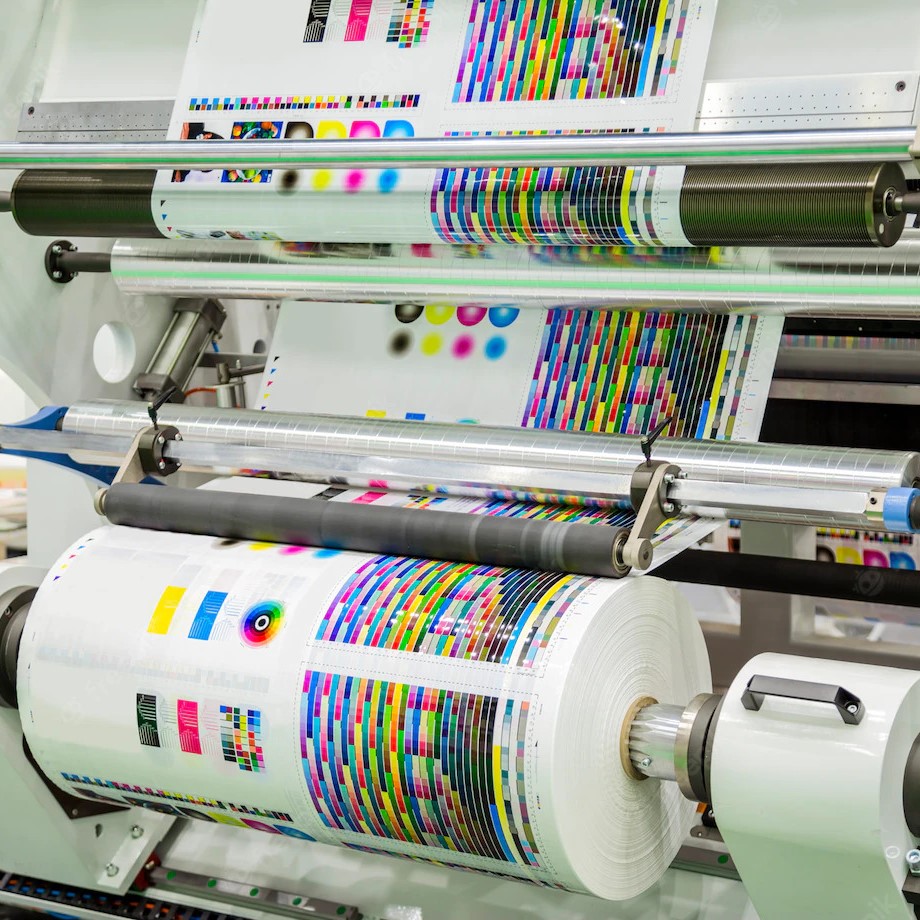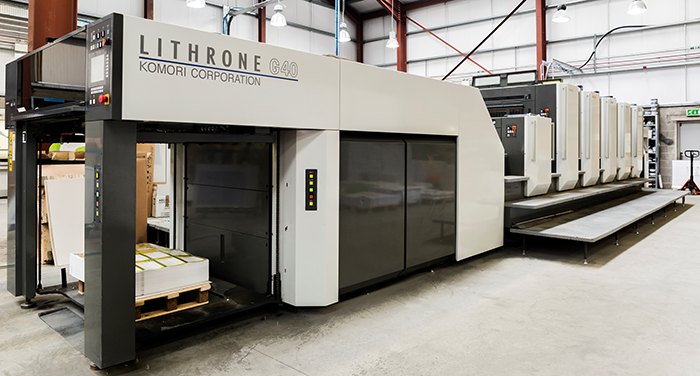Exploring Flexibility in Format and Design with litho printing
Wiki Article
The Vital Overview to Recognizing Litho Printing and Its Applications
Litho printing stands as a significant method in the printing sector, rooted in the principles of oil and water repulsion. This strategy not only supplies high-grade photos however additionally deals with different business requirements. Its applications range from advertising and marketing materials to packaging, showcasing its versatility. As the market adapts to brand-new modern technologies, the evolution of litho printing raises questions concerning its future and significance in an electronic landscape. What exists in advance for this enduring technique?
What Is Litho Printing?
Litho printing, a commonly used printing technique, relies upon the principle of oil and water repulsion. This method uses a flat printing surface area, typically a steel plate, which is dealt with to guarantee that the picture locations are receptive to oil-based inks while the non-image areas repel them. The procedure begins with the development of a picture on home plate, usually with drawing or photographic ways. When the photo is prepared, home plate is wetted with water, complied with by the application of ink. The ink sticks just to the picture areas, permitting exact reproduction of graphics and message. Litho printing is preferred for its ability to generate top quality prints with fine information and vivid colors. It is frequently used in industrial applications, consisting of papers, magazines, and product packaging, showcasing its convenience and effectiveness in satisfying the demands of modern-day printing.The History of Lithography
Lithography is a contemporary printing staple, its origins map back to the late 18th century when German playwright Alois Senefelder designed the technique in 1796. At first developed as an approach for recreating texts and photos, lithography utilized a flat stone surface area to create prints via a chemical procedure. Senefelder's innovation permitted for better adaptability and creative expression contrasted to previous printing methods.By the 19th century, lithography gained extensive acceptance, coming to be a preferred selection among musicians and authors. It made it possible for the mass manufacturing of pictures, maps, and posters, especially impacting the printing sector. The method better evolved with the introduction of lithographic presses, enhancing effectiveness and quality.As the industrial transformation progressed, lithography adapted to meet the demands of commercial printing, paving the means for modern applications. Today, it remains an essential strategy in numerous fields, including publishing, product packaging, and art recreation.Exactly How Litho Printing Works
An essential feature of litho printing is its dependence on the concept of oil and water repulsion - litho printing. In this procedure, images are moved from a level surface, normally a steel or polymer plate, to paper. The plate is dealt with to make sure that the locations intended for printing attract ink, while the non-image locations repel it because of their fondness for water. The printing starts by moistening the plate with water, which adheres to the non-image areas. Consequently, an oil-based ink is applied, sticking just to the desired picture areas.When home plate comes right into contact with the substrate, the ink is moved, developing a print. The litho printing procedure can producing top notch photos with fine information. It is typically utilized for automation as a result of its performance and uniformity, making it a favored technique for business printing applicationsBenefits of Litho Printing
One significant benefit of litho printing is its ability to generate top notch pictures continually, making it an optimal option for commercial tasks. This printing method utilizes a flat printing plate, making certain even ink distribution and sharp details. Litho printing is additionally renowned for its shade accuracy, making it possible for dynamic and true-to-life recreations, which is important for branding materials.Moreover, it sustains a wide range of substratums, including paper, cardboard, and even certain plastics, improving its adaptability. The procedure is economical for large runs, as economies of range minimize per-unit costs. In enhancement, litho printing has a fast turn-around time, enabling effective production schedules.Its longevity additionally suggests that published materials resist fading, making sure that the last item maintains its aesthetic appeal gradually. Overall, these benefits make litho printing a preferred option across various industries, adding to its enduring popularity.
Applications of Litho Printing in Organization
As services increasingly seek trusted and top notch printing services, litho printing emerges as a principal in various applications. This technique is especially preferred for producing advertising and marketing materials such as sales brochures, flyers, and catalogs, many thanks to its capability to provide vibrant shades and sharp photos. In enhancement, litho printing is often employed for packaging remedies, allowing firms to create captivating labels and boxes that enhance item appeal.In the industry of corporate identification, litho printing contributes in creating expert stationery, business cards, and marketing product, which aid strengthen brand recognition. It is widely used in the publishing market for printed products such as publications and publications, where constant quality is critical. Overall, litho printing's flexibility and performance make it a necessary device for companies intending to communicate efficiently and develop a solid market existence.Artistic Utilizes of Litho Printing
Litho printing functions as a navigate to this site flexible medium in the domain name of printmaking, offering artists a special method to share their imagination. This strategy permits a variety of artistic applications, from typical prints to contemporary analyses. By checking out the subtleties of litho printing, musicians can harness its distinctive qualities to boost their work.
Printmaking Methods Summary
The virtuosity of printmaking encompasses a diverse series of techniques, with litho printing sticking out for its one-of-a-kind method to picture production. This approach counts on the principle of oil and water repulsion, enabling artists to attract directly onto a limestone or steel plate with a greasy tool. As soon as prepared, home plate is dampened and tattooed, transferring the image onto why not try here paper through stress. Litho printing is celebrated for its ability to produce great details and abundant tonal variations, making it a favored choice amongst musicians. In addition, the process is functional, accommodating both standard techniques and modern-day adaptations. This versatility allows litho printing to bridge numerous creative designs, enriching the printmaking landscape with its distinct attributes and abilities.One-of-a-kind Artistic Applications
Discovering the distinct creative applications of litho printing reveals its remarkable convenience in various creative fields. Artists use litho printing to develop complex layouts and appearances, permitting meaningful and thorough works. The process helps with the reproduction of vibrant shades, making it suitable for illustrations and art prints. Several modern musicians embrace lithography for its capacity to incorporate typical methods with modern-day concepts, resulting in ingenious art work. Furthermore, litho printing is often used in the manufacturing of restricted edition prints, improving their value and allure. The responsive high quality of litho prints includes a distinctive measurement, drawing in enthusiasts and art enthusiasts alike. On the whole, litho printing stays a substantial tool for imaginative expression, connecting classic methods with contemporary creative thinking.The Future of Litho Printing in a Digital Globe
As the printing sector develops, litho printing deals with the challenge of integrating electronic modern technologies to continue to be appropriate. Techniques concentrated on digital assimilation, along with patterns in sustainability and development, will shape its future - litho printing. Comprehending these dynamics is essential for market stakeholders aiming to adjust to a swiftly transforming landscapeDigital Combination Approaches
A growing variety of litho printing business are welcoming electronic combination strategies to stay affordable in a significantly electronic landscape. By incorporating digital process, these business can streamline procedures and boost efficiency. This combination permits real-time data management and enhanced communication between departments, decreasing turnaround times substantially. Additionally, digital devices allow far better personalization and personalization of printed products, satisfying details consumer demands. Business are likewise embracing crossbreed printing remedies that incorporate standard litho strategies with digital modern technologies, providing adaptability in manufacturing. Leveraging data analytics helps in comprehending market fads and client choices, permitting businesses to make educated choices. Generally, digital combination is ending up being crucial for litho printing business aiming to introduce and react to developing market needs.Sustainability and Advancement Patterns

Frequently Asked Questions
What Materials Are Commonly Made Use Of in Litho Printing?
The products commonly utilized in litho printing include light weight aluminum plates, ink, water, and paper. Each part plays an essential function in the printing procedure, ensuring high-quality picture recreation and effective transfer of ink onto the substrate.Exactly How Does Litho Printing Contrast to Digital Printing?
Litho printing offers premium shade uniformity and top quality for huge runs, while digital printing succeeds in short runs and customization. Each approach has distinctive benefits, accommodating various demands based upon production range and cost-efficiency.What Is the Typical Turn-around Time for Litho Printing Projects?
The common turnaround time for litho printing tasks varies, generally ranging from a few days to a number of weeks. Aspects influencing this timeframe consist of job intricacy, amount, and needed ending up procedures, affecting total manufacturing routines.Can Litho Printing Accommodate Personalized Sizes and Formats?
Litho printing can indeed suit personalized sizes and formats, enabling for versatility in style. This flexibility makes it possible for clients to attain one-of-a-kind print results tailored to their certain demands, boosting the general effectiveness of their jobs.What Are the Ecological Impacts of Litho Printing?
The environmental effects of litho printing consist of source usage, chemical use, and waste generation. Developments in sustainable practices and eco-friendly products are progressively minimizing these negative results, advertising a more environmentally responsible approach to printing.Report this wiki page